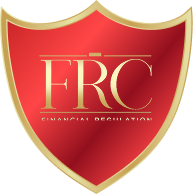The financial landscape is evolving rapidly, with wealth managers and accountants under increasing pressure to deliver more efficient, personalised, and strategic services. The integration of wealth management and accounting systems is a transformative trend that promises to streamline operations, reduce errors, and enhance client satisfaction. By connecting these two traditionally separate functions, professionals can provide more comprehensive financial solutions that are both proactive and holistic.
In wealth management, the focus lies on managing investments, planning for the future, and advising clients on a range of financial decisions, including tax strategies and retirement plans. Accounting, on the other hand, encompasses the accurate recording of financial transactions, preparing tax returns, ensuring regulatory compliance, and producing financial reports. Traditionally, these functions have operated independently. However, as clients demand a more coordinated approach to managing their finances, the need for integration between wealth management and accounting systems has become more pressing.
This article explores the benefits of integrating wealth management and accounting, the key features of successful integration, the tools available to facilitate this, and the future of such integrations in 2025 and beyond. We will also discuss the challenges and solutions associated with these integrations, ultimately highlighting how they can transform the way financial professionals work and improve client outcomes.
The integration of wealth management and accounting systems addresses several challenges that arise when these functions are kept separate. Historically, wealth managers and accountants have worked in silos, with limited communication and coordination. This lack of collaboration can lead to inefficiencies, missed opportunities, and errors in tax planning, portfolio management, and financial reporting.
Integrating these systems brings together critical financial data, providing wealth managers and accountants with a unified view of a client's financial situation. This makes it easier to identify gaps, opportunities for optimisation, and potential risks. More importantly, integration enables a more seamless experience for clients, who increasingly expect their wealth and financial management to be more streamlined and coordinated.
One of the core benefits of integration is the ability to share and access real-time data. Both wealth management and accounting functions rely heavily on accurate, up-to-date financial information. Wealth managers need current data on investment performance, income, expenses, and overall financial health to make informed decisions. Likewise, accountants require accurate financial records to prepare tax filings, generate reports, and ensure compliance.
When wealth management and accounting systems are integrated, both teams can access the same data at the same time. This reduces the risk of discrepancies between investment reports and financial statements and ensures that both teams are working with the most recent data. Real-time data sharing improves the accuracy of financial planning and tax reporting, allowing professionals to offer better, more informed advice to clients.
Today's clients are looking for more than just financial advice; they seek an integrated service that covers both their investments and their accounting needs. By offering a seamless experience that ties together both wealth management and accounting services, financial professionals can build stronger relationships with clients.
Integration enhances client experience by eliminating the need for clients to engage with separate teams or systems for wealth management and accounting. This leads to a more efficient, personalised, and transparent service. Furthermore, integrated systems often feature user-friendly dashboards, making it easier for clients to access their financial information and track progress toward their goals.
The primary goal of wealth management is to help clients achieve their financial objectives, such as growing their wealth, saving for retirement, or optimising their tax situation. Accounting plays a crucial role in this process by providing insights into income, expenses, tax liabilities, and other financial factors.
When wealth management and accounting systems are integrated, wealth managers can develop more comprehensive, data-driven financial strategies. By considering both investment goals and accounting information, they can create more tax-efficient portfolios, minimise liabilities, and offer tailored solutions that align with the client’s broader financial picture.
Integrating wealth management and accounting systems significantly enhances operational efficiency. Without integration, wealth managers and accountants may need to manually transfer data between different software platforms or systems, increasing the potential for errors and redundancies. This process can be time-consuming and labour-intensive.
Integrated systems automate many of these tasks, allowing for seamless data transfer, real-time updates, and automated reporting. This reduces the workload for both wealth managers and accountants, freeing them up to focus on more strategic tasks, such as client relationship building and financial decision-making.
Successful integration of wealth management and accounting systems requires certain features to ensure that both functions operate smoothly together. Below are the most important features to look for in an integrated system.
A unified dashboard is essential for both wealth managers and accountants. This single interface consolidates all financial data, including investment portfolios, income and expenses, tax liabilities, and more. With a unified dashboard, professionals can gain a holistic view of a client’s financial situation, allowing them to make more informed decisions and provide comprehensive advice.
Tax efficiency is a key consideration in both wealth management and accounting. Integrated systems can automate tax optimisation by considering real-time financial data and making recommendations for tax-efficient strategies. These systems can also generate tax reports automatically, reducing the risk of human error and ensuring compliance with tax laws.
For example, an integrated platform might suggest strategies for tax-loss harvesting or optimising withdrawals from tax-deferred accounts, all while accounting for the client's overall tax situation. This helps clients minimise their tax burden while maximising their investment returns.
An integrated system allows for seamless portfolio management and accounting alignment. Wealth managers can track investments, asset allocation, and performance, while accountants can manage financial records, income statements, and tax filings. The integration ensures that both functions are working from the same set of data, reducing discrepancies and improving the accuracy of reports and financial planning.
Managing cash flow is essential to both wealth management and accounting. Integrated systems often feature tools for tracking income, expenses, and savings, helping both wealth managers and accountants monitor financial health. With real-time cash flow data, wealth managers can recommend strategies to improve savings, reduce debt, and optimise spending, while accountants can ensure that clients are staying within their budget and maintaining a healthy financial position.
In today’s highly regulated financial environment, staying compliant with tax laws, financial reporting standards, and other regulatory requirements is essential. Integrated wealth management and accounting systems streamline compliance by automatically generating the necessary reports, helping professionals stay on top of changing regulations.
Integrated systems also reduce the risk of human error when generating compliance-related documents. By keeping all financial data in one system, accountants and wealth managers can ensure that reports are accurate and up-to-date, making it easier to meet regulatory obligations.
Several software platforms offer integrated solutions for wealth management and accounting, providing a comprehensive view of clients’ financial situations. Below are some of the most widely used tools in the industry.
Xero is a cloud-based accounting software that integrates with a variety of financial planning tools. It provides real-time financial reporting, invoicing, and tax preparation, while financial planners can use integrated tools to manage investments, track portfolios, and optimise strategies. Xero’s integration with financial planning tools enables wealth managers to access both investment and accounting data in one place.
QuickBooks is a popular accounting solution that integrates with wealth management platforms such as Mint, Personal Capital, and others. With QuickBooks, accountants can manage tax filings, generate financial statements, and track expenses, while wealth managers can leverage integrated platforms to optimise investment strategies. The integration provides a seamless experience for clients and financial professionals alike.
Wealthfront is an automated investment platform that integrates with tax-optimisation tools, offering features like tax-loss harvesting and automated tax reporting. By combining Wealthfront's investment capabilities with tax data, wealth managers can optimise portfolios for tax efficiency, while accountants can easily access the necessary reports for tax filings.
Addepar is a leading wealth management platform that integrates with accounting systems to provide a comprehensive view of a client's financial situation. Wealth managers can use Addepar to track portfolios, assess risk, and analyse asset allocation, while accountants can rely on its integration with accounting software to ensure that financial records are accurate and up-to-date.
FIS offers a suite of tools for wealth management, including portfolio management, financial planning, and risk analysis. Its integration with accounting systems helps ensure that both financial planning and tax reporting are aligned, providing a seamless service for clients.
While the benefits of integration are significant, there are also challenges that professionals need to consider.
Efficiency Gains: Integration reduces duplication and manual data entry, saving time and reducing errors.
Improved Client Service: A more seamless, personalised service leads to higher client satisfaction.
Comprehensive Financial Planning: Integrated data enables wealth managers to provide more holistic advice, aligning tax and investment strategies.
Better Compliance: Automated compliance tools reduce the risk of regulatory errors.
Upfront Costs: Integration can require significant investment in software and training.
Complexity: Integrating multiple systems can be technically complex, particularly for firms with legacy systems.
Data Security: Handling sensitive financial data requires robust security measures to protect against cyber threats.
As wealth management continues to evolve, the integration of accounting systems has become a necessity for financial professionals seeking to offer more comprehensive, efficient, and personalised services. By combining investment strategies with accounting data, wealth managers can optimise their clients' financial situations in ways that were not possible before.
The right tools and platforms make these integrations seamless, offering improved data access, enhanced client service, and better financial planning outcomes. However, successful integration requires careful planning, the right technology, and a commitment to data security and regulatory compliance.
As we move into 2025, the trend towards integrated wealth management and accounting systems will continue to grow, providing financial professionals with the tools they need to stay competitive and deliver exceptional value to their clients.
Be the first to know about new class launches and announcements.


Financial writer and analyst Ron Finely shows you how to navigate financial markets, manage investments, and build wealth through strategic decision-making.
